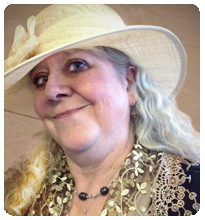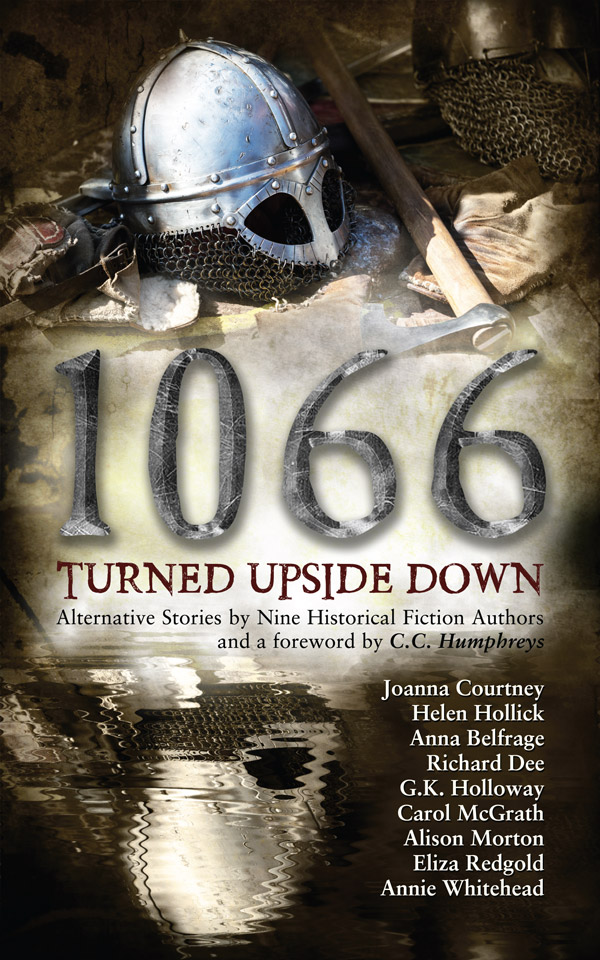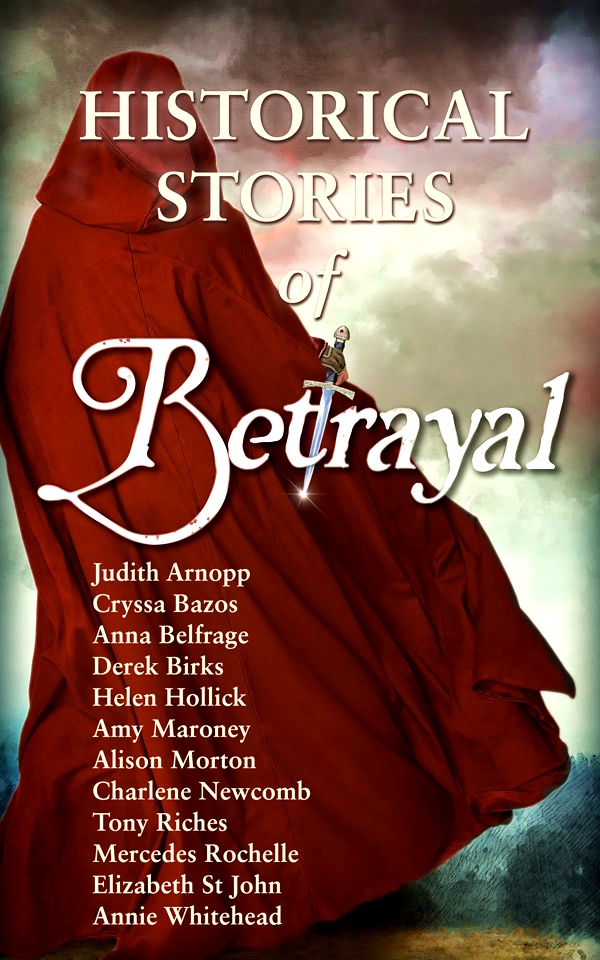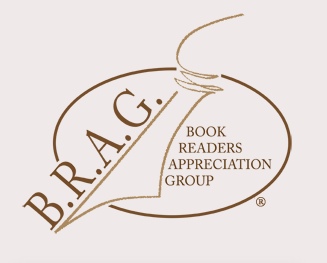Summer is here – warm, lazy days, extra wine, days out with the family and friends, a holiday away. But when the temperature is persistently over 30C, I tend to wilt. Yesterday reached 39C in the shade. My Muse has gone for a protracted lie down somewhere in a cool cave several metres underground.
Enter guilt – my new story is proceeding at ‘walking through tar speed’ as my brain has melted. But I am doing catch-up admin tasks and currently hosting some fabulous fellow writers on this blog, so not totally unproductive!
How to keep cool while trying to be creative?
I really don’t like air-conditioning – on principle on environmental grounds. Although comforting for us as individuals, we are collectively shoving hot air into the atmosphere at a rapid rate and contributing directly to climate change. It should be an absolute last resort and whether public or private, it should not be set at a silly level where you need to wear a cardigan or jacket indoors in a heatwave. Around 22-23C is perfectly fine. Even 24C is bearable to work in.
So what do I do here in southwest France in a heatwave? Fans, and coolers with a water/icepack tank, in every room powered by our solar panel system, ice, free and not drawing electricity from the grid.
But the true secret is one that has been practised for centuries in mainland Europe.
6 am – Indoor temperature overnight has been about 27C, even with the fans on sleep mode as the previous evening was 31C at 11pm. Open shutters and windows and breathe the morning air – a blissful 21C! Open one window wide and draw net across to stop flying insects entering. Our windows open inwards which makes this easy. Rinse and repeat around the whole house and treasure the cooler air flowing in.

Position the fan so it draws in the cooler air from the window. The temperature in the house drops by a few degrees.
Keep an eye on the outside temperature. By around 10 am, it’s risen to the same level the house interior has dropped to – 25 C. Time to close the (now double-glazed) windows.

Depending on where the sun is, then shutters should be closed on the latch. If shutters are completely closed tight, the heat of the sun on the shutters has nowhere to escape.

Then cower in darkened rooms until the daytime exterior temperature outside drops to below the interior temperature. If it does, then re-open the windows and let the fresher air in.
Above all, do not be tempted to open the windows during the heat of the day. All you will do is let the hot air in.
This system of using shutters and fans keeps the interior temperature to a reasonable level with little environment impact. If you don’t have shutters, then close your curtains instead.
Hopefully, this current heatwave will ease later this week. Until then, think of me at 6am, slightly bleary-eyed, starting the window and shutters process!
Alison Morton is the author of Roma Nova thrillers – INCEPTIO, CARINA (novella), PERFIDITAS, SUCCESSIO, AURELIA, NEXUS (novella), INSURRECTIO and RETALIO, and ROMA NOVA EXTRA, a collection of short stories. Audiobooks are available for four of the series. Double Identity, a contemporary conspiracy, starts a new series of thrillers. JULIA PRIMA, Roma Nova story set in the late 4th century, starts the Foundation stories. The sequel, EXSILIUM, is now out.
Find out more about Roma Nova, its origins, stories and heroines and taste world the latest contemporary thriller Double Identity… Download ‘Welcome to Alison Morton’s Thriller Worlds’, a FREE eBook, as a thank you gift when you sign up to Alison’s monthly email update. As a result, you’ll be among the first to know about news and book progress before everybody else, and take part in giveaways.
If you enjoyed this post, do share it with your friends!Like this:Like Loading...

I’m delighted to welcome Clare Flynn back to the blog. She’s the author of eighteen historical novels and is about halfway through her nineteenth. published by Storm, Canelo and herself, her books have now been translated into three languages.
She lives on the south coast of England, in Sussex, where she can watch the sea from her windows. An avid traveller, her books are often set in exotic locations.
Clare is a Fellow of the Royal Society of Arts, a member of the Society of Authors, the Historical Writers Association, the Alliance of Independent Authors, the Romantic Novelists Association and the Arts Society. She was the Romantic Novelists Association Indie Champion of the Year in 2022 and the 2020 winner of the Book Brunch Selfies for The Pearl of Penang.
An opening caveat
First of all – I don’t write what are classified as romances. There are very strict rules and tropes that define romance and failure to abide by them can create disappointment and even anger among dedicated afficionados of the genre. Instead, I’d describe my books as historical fiction with a strong romantic element – if not always with a Happy Ever After (the sine qua non in romances!)
 Indian Ocean by night Having got that caveat out of the way, it is still an interesting challenge to entwine a love story within a novel that may be dealing with what can often be challenging or disturbing historical events such as war.
My latest novel, The Star of Ceylon, set in 1906, offers an example of this balancing act. There’s no war, but the book focuses on some weighty social issues such as colonialism, misogyny and sexism, sexual violence, and the treatment of natives by the colonial powers. Yet at the core of the book is a love story. There is a risk with marrying the tenderness of a love story with meaty social commentary: too much politics and you risk the reader feeling they’ve been bashed over the head with a manifesto, too much romance and you risk trivialising and glossing over the harsh realities of the times.
So, how to strike the balance?
The key is to make the big political background personal. The stories of the protagonists must be fundamentally woven from the cloth of the social injustices being portrayed. In the case of my main female character, her entire life is centred on one core social issue – the way the doors to education are being opened wider than ever – but as women try to pass them through them, they are slammed shut. This is all part of a larger picture that characterised the turn of the last century – a wave of feminism that led to women wanting the same rights as men – in voting, in working, in pay, in marriage and in education.
Stella and the Hunger for Academia
 Temple statue It is a passion for anthropology that is the driving force of Stella Polegate’s existence. She has had privileged access as her father is an eminent Oxford scholar and she acts as his research assistant, accompanies him on his expedition to study the Tamil peoples – yet is denied the chance to study for a degree herself. This injustice is articulated not by my voice as the author, but passionately by Stella herself. It colours almost every interaction she has – with her father, her brother, her father’s PhD student, with Norton Baxter (the other protagonist) and with Mrs Moreland, the wife of a senior civil servant she meets early in the book. It is also dramatized by the contrast with other female characters within the book – particularly Cynthia Metcalfe, who would run a mile from the merest whiff of anything academic.
Everything that Stella does – from the books she reads, the beliefs she holds, her attitudes to other people – stems from her thirst for knowledge. The events that befall her (no spoilers here!) all derive directly from this existential motivation.
Norton and the Injustices of Colonialism
 A colonial relic in Sri Lanka The same is true of Norton Baxter. It would have been possible to give Norton another reason to be in Ceylon (I originally planned for him to be a tea planter) but making him a civil servant placed him right at the beating heart of empire.
If I’d followed the first tack, he would have been an observer of empire from a more dispassionate distance. I’ve had characters in other books (The Pearl of Penang and Kurinji Flowers) who are living in the British colonies and experiencing the privileged expatriate life. But this is part of the backdrop. In the case of The Star of Ceylon I wanted it to drive Norton. He’s a young man with ideals and ambition – determined to prove himself to a judgmental father and with no particular axe to grind about the British Empire – it was a fact of life to most Edwardians living before the trauma of the Great War.
But – like Stella’s feminism – Norton’s awakening to the evils of colonialism is entirely personal. His opinions evolve as the book progresses based on what he witnesses first hand – the cruelty and entitlement of his boss – who sees himself as innately superior to the native Sinhalese; the teachings of his language tutor – a Buddhist monk; and what he witnesses on two visits to the jail. He sees it too on a hunting trip, where he can compare the quiet competence of a native guide to the overbearing behaviour of the other British men in the party, and he sees it every day in the professionalism and intelligence of the native clerks in the office, denied promotion because they’re not British.
In other words, I hope the reader will understand the social commentary of the book entirely by experiencing it through the eyes of Norton and Stella.
The Romantic Story
I won’t give away any spoilers here, but the love story is between Stella and Norton – a seemingly hopeless and completely impractical attraction. Their different lives, aspirations and ambitions make a future as a couple unthinkable. He is in no position to take a wife. She wants to return to England to fight for that career in academia.
A love story could never happen without the momentum given to it by the social factors discussed above and the events that derive from them.
In conclusion
The craft of creating believable characters and integrating them within the framework of larger societal changes relies entirely on seeing the two sides holistically. The socio-political aspects are not a backdrop, there to provide colour and background to a romantic story. The two are seamlessly interwoven, each driving the other.
Writing this post makes it seem as though I sat down and thought all this through before I started to write the book. But it wasn’t like that at all. The act of writing for me is less conscious and more instinctive, and the story evolves as I go (I am definitely not a planner!). Often readers are better at describing why and how a book works than the author is!
I hope I’ve succeeded in doing what I’ve described here, in The Star of Ceylon. I certainly enjoyed the process. Read the book and let me know!
My thanks to Alison for inviting me onto her blog and for making me think about this.
————
Connect with Clare on her website: https://clareflynn.co.uk
————
So what’s The Star of Ceylon about?

Ceylon, 1906: Stella Polegate steps off the ship in Colombo harbour, her heart beating with contradictory emotions. As her father’s unofficial research assistant, she’s thrilled to explore this island of ancient temples and verdant tea plantations—yet painfully aware that her brilliant mind will remain uncredited, her academic ambitions dismissed simply because she is a woman.
When her father’s doctoral student makes unwelcome advances that escalate to violence, Stella’s carefully ordered world shatters.
With her reputation and future hanging in the balance, she finds an unexpected ally in Norton Baxter, a principled young civil servant whose growing disillusionment with colonial rule mirrors her own questioning of societal constraints.
As Stella navigates the suffocating expectations of colonial society, she must make an impossible choice. Should she accept the limitations imposed upon her gender or fight for the academic future she deserves? And can she trust Norton with her damaged heart when every man in her life has sought to control her destiny?
From the misty highlands of Kandy to the bustling port of Colombo, Stella’s journey becomes a defiant quest not only for love but for something far more elusive—the freedom to become the author of her own story.
Buy the book here: geni.us/1087-cr-two-am
My thoughts
You can always rely on Clare Flynn to evoke a strong atmosphere in her novels – she writes so visually, but also has the knack of exploring the inner workings of her characters’ minds.
A glimmer of change in colonial attitudes in the early part of the 20th century was stuttering into life; Stella and Norton represent this. However, the indolent lifestyle, spoiled children and entitlement were dominant. Even the more kindly supporting characters are shown with a patronising attitude to the local population.
Women were still trapped in 1906 in a way that reminded me of Jane Austen’s women characters: the assumption that to be a valid member of society women had to be married, run a household and bear children. Academic study, let alone gaining a degree was out of the question. The only way to gain intellectual recognition was publishing work via the husband or father’s name.
The book does not fight shy of controversial issues nor does the author let up on tension. As I was reading, I truly hoped the heroine would prevail, but so many obstacles were stopping her. Flynn doesn’t let up but makes us think about her characters’ tough choices in the context of their time. and they are tough choices!
The ending was satisfying but felt a little unresolved. I sincerely hope Clare Flynn is writing the sequel!
Alison Morton is the author of Roma Nova thrillers – INCEPTIO, CARINA (novella), PERFIDITAS, SUCCESSIO, AURELIA, NEXUS (novella), INSURRECTIO and RETALIO, and ROMA NOVA EXTRA, a collection of short stories. Audiobooks are available for four of the series. Double Identity, a contemporary conspiracy, starts a new series of thrillers. JULIA PRIMA, Roma Nova story set in the late 4th century, starts the Foundation stories. The sequel, EXSILIUM, is now out.
Find out more about Roma Nova, its origins, stories and heroines and taste world the latest contemporary thriller Double Identity… Download ‘Welcome to Alison Morton’s Thriller Worlds’, a FREE eBook, as a thank you gift when you sign up to Alison’s monthly email update. As a result, you’ll be among the first to know about news and book progress before everybody else, and take part in giveaways.
If you enjoyed this post, do share it with your friends!Like this:Like Loading...
 I’m delighted to welcome Jean Gill, the award-winning Welsh author and photographer now living in the south of France. Her claim to fame is that she was the first woman to be a secondary school headteacher in the Welsh county of Dyfed. I’m delighted to welcome Jean Gill, the award-winning Welsh author and photographer now living in the south of France. Her claim to fame is that she was the first woman to be a secondary school headteacher in the Welsh county of Dyfed.
Best known for her adult medieval adventure fiction, her 27 books include Young Adult dystopian fantasy, WW2 military history, a cheese cookbook and a dog book. Her latest series The Midwinter Dragon is set in 12th century Viking Orkney.
With Scottish parents, an English birthplace and French residence, she can usually support the winning team on most sporting occasions.
Jean is one of my fellow authors selected to write for a new collection of short stories ‘FATE’, commissioned by the Taw River Press.
Over to Jean!
When a fellow-author invites you to contribute to a multi-author anthology, it is a big compliment so whether or not I say yes, I always say thank you. I remember the days when such an invitation would have been a dream come true. I have never regretted saying yes because the collaboration has always been an enjoyable way of reaching new readers and meeting new writers but I have sometimes said no. I know what the pitfalls can be and thought I’d share with you some questions I ask myself before committing to such a project.
Is the organiser someone whose writing you respect and who can also herd us cats in order to publish a multi-author book?
‘You can judge people by the company they keep’ is a useful old saying. This is exactly what your readers will do.
Which other authors will be featured? Will you be happy to see your work published alongside such company? If not, you won’t want to promote the book, which will damage your reputation with your fellow-authors. And if you do recommend it, your readers will be equally disappointed. It is too late to pull out once you’ve read the whole book so check out the other contributors if you don’t know them. Ideally, ‘good company’ means that their readers might enjoy your books.
 Chorus line working together! Photo © Jean Gill What is the organiser’s aim and does this meet yours?
If the aim is high sales and a place on a bestsellers’ list, with large advertising contributions expected from all authors, that would not suit me. If it’s to enjoy collaborating and to reach new readers, that does suit me. One multi-genre anthology I took part in was organised by bestselling author L. J. Ross and her publicity team. We raised over £25,000 for the UK charity Shelter with the book Kindness. Wonderful! But all credit goes to L. J. Ross. Nothing more was expected of me than my story on the theme of kindness, and that I would share the book details with my readers. That was the unicorn anthology. Usually you can expect a few new readers, some new writer-friends to add to your network, and a boost to your writing output.
This is a publishing contract so treat it like one.
I don’t need legalese but I do want to know that the book will be professionally presented in editing, formatting and cover.
Will there be any royalty share or will the organiser invest any royalties after publishing costs in marketing or are proceeds going to a charity? (The three usual models).

If this is new work, exclusive to the anthology, for how long is this the case? Usually you will get the rights back after two or three years but before that time you must not publish your work elsewhere. Giving your story free to Patreon subscribers breaks an exclusivity agreement.
Honour your agreement and if you’re not sure whether you can e.g. enter a short story award, ask the organiser!
And – probably your first thought! – what are you going to write if, as is usually the case, it must be new work?
Do you want to write to the constraints given e.g. genre, theme and/or word count? What is the deadline and can you meet it?
The last time I received an invitation, I was in the middle of writing the third book in my Midwinter Dragon series so I should have said no. Also, I had no idea what I would write. Despite that, some instinct said, ‘Take a break. Have fun.’ I trusted the organiser and knew I would be in good company, some known writers, some new to me, all writing on historical themes, however different in style and period. I could pause work on my novel at the end of one of the dual narratives, as I write one at a time, then weave them together when I’ve completed both. So I said yes.

Some writers use out-takes from their series, or short stories developing minor characters, which are good ways to attract readers to your books. Nothing so sensible for me. My subconscious knows what is required and I wait. This story was so insistent that I wrote the first draft of 7,000 words in two airports, Lyon and Copenhagen, during two very long waits between connections. I was so immersed in my other world that I’m lucky I didn’t miss the gate announcement and I can’t wait to hear what readers think of the result, Six Pomegranate Seeds in the anthology Fate.
Perhaps an invitation to contribute to an anthology is on its way to you at this very moment. If you know your answers to my questions and still want to say YES! let the adventure begin!
Thank you, Jean. after I read your story in FATE, I have to say that I will not look at pomegranate seeds in the same way from now on. But I do love the return of spring…
———–
Find out more about Jean
Website: www.jeangill.com
Facebook: https://www.facebook.com/writerjeangill
Bluesky: https://bsky.app/profile/writerjeangill.bsky.social
Instagram: https://www.instagram.com/writerjeangill/
———–
Jean’s latest series – The Midwinter Dragon is set in 12th century Viking Orkney.
Book 1 The Ring Breaker: 1150 Orkneyjar
 Loyalty has a price the children pay Loyalty has a price the children pay
In the twilight of the old gods, when the last Vikings rule the seas, two cursed orphans meet on an Orkney beach and their fates collide.
Stripped of honour, facing bleak loneliness ahead, Skarfr and Hlif forge an unbreakable bond as they come of age in the savage Viking culture of blood debts and vengeance. To be accepted as adults, Skarfr must prove himself a warrior and Hlif must learn to use women’s weapons. Can they clear their names and choose their destiny? Or are they doomed by their fathers’ acts?
The award-winning author of The Troubadours Quartet returns to the 12th century, with skalds instead of troubadours and Viking warriors instead of crusaders. Get ready for authentic medieval adventures steeped in poetry, politics and passion. Perfect for fans of Bernard Cornwell Matthew Harffy and Madeline Miller.
⭐⭐⭐⭐⭐ ”So good I read it twice,” Lesley Walters, Goodreads
Historical Fiction Book of the Year 2023 – Bjørn Larssen, blogger at Queen’s Book Asylum
Shortlisted for the 2022 Selfies Award and the 2022 Chaucer Award; Quarter-Finalist in The Booklife Prize.
Buy the Ringbreaker here: https://books2read.com/Orkneyjar
And FATE? 
If you had a crystal ball to predict what lay ahead, would you be tempted to use it? Or would you leave the future to the turn of Fate?
Tales of history, mystery and magic – some comprising just one of these popular fiction genres, others, a mild mixture of all three.
Our aim, as well-known popular authors, is to entertain you – the reader – but also to share a smorgasbord of short stories that delve into different eras and different locations via different characters and events.
The common theme? Fate! And we should never try to out-do Fate, whatever her form…
Check out and buy the book HERE! https://mybook.to/FateAnthology
Stories by Annie Whitehead, Jean Gill, Marian L Thorpe Helen Hollick, Alison Morton, Elizabeth St. John, R. Marsden, Anna Belfrage, J.P. Reedman and Debbie Young
Watch the (rather fabulous) book trailer: https://youtu.be/M9pSrDX8PTQ
Alison Morton is the author of Roma Nova thrillers – INCEPTIO, CARINA (novella), PERFIDITAS, SUCCESSIO, AURELIA, NEXUS (novella), INSURRECTIO and RETALIO, and ROMA NOVA EXTRA, a collection of short stories. Audiobooks are available for four of the series. Double Identity, a contemporary conspiracy, starts a new series of thrillers. JULIA PRIMA, Roma Nova story set in the late 4th century, starts the Foundation stories. The sequel, EXSILIUM, is now out.
Find out more about Roma Nova, its origins, stories and heroines and taste world the latest contemporary thriller Double Identity… Download ‘Welcome to Alison Morton’s Thriller Worlds’, a FREE eBook, as a thank you gift when you sign up to Alison’s monthly email update. As a result, you’ll be among the first to know about news and book progress before everybody else, and take part in giveaways.
If you enjoyed this post, do share it with your friends!Like this:Like Loading...
 I’m always very pleased to welcome Helen Hollick to my writing blog. Known for her captivating storytelling and rich attention to historical detail, her historical fiction, nautical adventure series, cosy mysteries – and her short stories – skilfully invite readers to step into worlds where the boundaries between fact and fiction blend together. I’m always very pleased to welcome Helen Hollick to my writing blog. Known for her captivating storytelling and rich attention to historical detail, her historical fiction, nautical adventure series, cosy mysteries – and her short stories – skilfully invite readers to step into worlds where the boundaries between fact and fiction blend together.
Helen started writing as a teenager, but after discovering a passion for history, was initially published in 1993 in the UK with her Arthurian Pendragon’s Banner Trilogy and two Anglo-Saxon novels about the events that led to the 1066 Battle of Hastings, one of which, The Forever Queen (USA title – A Hollow Crown in the UK) became a USA Today best-seller. Her Sea Witch Voyages are nautical-based adventures inspired by the Golden Age of Piracy.
She also writes the Jan Christopher cosy mystery series set during the 1970s, and based around her, sometimes hilarious, years of working as a North London library assistant. Her 2025 release is Ghost Encounters, a book about the ghosts of North Devon.
Helen and her family moved from London to Devon after a Lottery win on the opening night of the London Olympics, 2012. She spends her time glowering at the overgrown garden, fending off the geese, helping with the horses and wishing the friendly, resident ghosts would occasionally help with the housework…
Over to Helen!
The last time I organised putting an anthology of short stories together with contributions by several well known writer friends, I told myself ‘never again.’ I rather have this habit of not listening to myself though, for here I am doing it again!
Let’s backtrack: the first anthology I immersed myself into was 1066 Turned Upside Down. The suggestion for this anthology came about when talking with other 1066-related authors at an annual Battle of Hastings re-enactment weekend in Sussex, England. We’d been talking ‘what if King Harold had won’ and the idea blossomed from there – an anthology of various ‘what if’ short stories going through that fateful year.

(Helen bludgeoned me to join in – I was the alternative history specialist, after all. But I had a horror of writing short stories. However, she was very persuasive. It proved to be a revelation and I consequently produced my own collection – ROMA NOVA EXTRA – which people seem to like. – Alison)
In hindsight, had I been the main organiser I’d have perhaps chosen a couple of different authors to participate. Authors who took marketing, etc. far more diligently. But with its superbly evocative cover the book did – is still doing – well. I learnt quite a few things about producing anthologies with that one, though!
Firstly, choose which authors to invite very carefully. Secondly, be clear about expectations; each author to do their own editing? Any royalties? Marketing? Who is to design the cover ? All the anthologies I’ve been involved with have been designed by Cathy Helms of avalongraphics.org. Take a look at them. The quality speaks volumes. And YES, you CAN (and do!) judge a book by its cover!

BETRAYAL came next. I wasn’t involved with producing this one, I was just a contributing author, but again, hindsight is a wonderful thing … Most of the contributing authors had their say in various aspects, which while not leading to arguments did cause ‘discussion’. The end result was – is – very good, but that old saying ‘too many cooks’ can be true!

So, onto EXILE. This was my idea, my organising, etc. with various authors contributing by invitation. The end result is superb, with exclusive stories by fantastic writers (including Elizabeth Chadwick.) This was the ‘I’ll-not-do-another-one-though’ title… re-read that first paragraph *laugh*
Here I am, then, talking about the latest anthology FATE: Tales of History. Mystery and Magic. Again with short stories written by a range of superb authors.

So why did I decide to ‘go for it’ and organise another anthology? Take your pick from insanity, desperation, wanting to help other authors and ‘well, I had an idea for a story…’ (Actually, they all apply!)
Marketing is the main reason. Finding new readers is becoming increasingly harder (not quite at desperation level yet, but there are days..!). As authors, we like to think of ourselves as whales in a pond. The harsh truth is, we’re tadpoles in an ocean. It’s probably easier to climb Everest than it is to ‘get noticed’. So marketing is hard, hard work. But several well-known, very good authors all talking about the same subject – the same title – is a good way to get noticed.
I also had a short story I’d written – and didn’t know what to do with it, which led to the idea to organise an anthology with a theme of ‘fate’ in all its meanings, followed closely by the idea (inspiration?) to include my dearest author friends again – but for us all to show what we could do beyond what we are usually known for doing. So, I added the clause of ‘magic’ into the theme of Tales Of History and Mystery – giving us all such a wide, wonderful spectrum to play around with, and enjoy!
The result is an eclectic collection of stories where no two are alike, but should please all readers – whatever their respective preferred genres. So in FATE we have the aftermath of conquest, the pursuit of alchemy, the concern of a mother for her daughter, the shifting of time, the necessity of hidden identity, souls who will linger as ghosts, a warning from the supernatural, the necessity for (justifiable?) revenge. All mingled with the rekindling of romance through a mutual quest, and the preparations for a village celebration. Diverse, entertaining and enjoyable. Hard work to collate together (Oh, those typos that creep in!!!) but you know what … 100% worthwhile.
I’m still going to say ‘I’m not doing it again though.’ (Yeah, right – Alison)
Like I said, I never listen to myself…
—————-
Connect with Helen
Website: https://helenhollick.net/
Facebook: https://www.facebook.com/helen.hollick
Bluesky: @helenhollick.bsky.social
X/Twitter @HelenHollick https://x.com/HelenHollick
Blog: supporting authors & their books https://ofhistoryandkings.blogspot.com/
Monthly newsletter : Thoughts from a Devonshire Farmhouse
https://ofhistoryandkings.blogspot.com/2024/01/thoughts-from-devonshire-farmhouse.html
—————-
FATE: Tales of History, Mystery and Magic

If you had a crystal ball to predict what lay ahead, would you be tempted to use it? Or would you leave the future to the turn of Fate?
Tales of Variety. Tales of History, Mystery and Magic – some comprising just one of these popular fiction genres, others, a mild mixture of all three.
An Anglo-Saxon woman facing the consequence of conquest; the pursuit of alchemy; the concern of a mother for her daughter; the shifting of time; the necessity of hidden identity; souls who will linger as ghosts; a warning from the supernatural; and the necessity for (justifiable?) revenge. And mingled with the rekindling of romance through a mutual quest, and the preparations for a Cotswold village celebration. (Along with a good tip of illicitly snaffling cakes.)
The binding theme? Destiny… Kismet… FATE!
Buy the ebook from Amazon: https://mybook.to/FateAnthology
Also available on Kindle Unlimited
Paperback: Order from any good bookstore
Available as: Kindle Unlimited, e-book and paperback
Watch the (rather brilliant) YouTube trailer produced by Jean Gill: https://youtu.be/M9pSrDX8PTQ?si=sqe7R1JpQoGwUjrb
Alison Morton is the author of Roma Nova thrillers – INCEPTIO, CARINA (novella), PERFIDITAS, SUCCESSIO, AURELIA, NEXUS (novella), INSURRECTIO and RETALIO, and ROMA NOVA EXTRA, a collection of short stories. Audiobooks are available for four of the series. Double Identity, a contemporary conspiracy, starts a new series of thrillers. JULIA PRIMA, Roma Nova story set in the late 4th century, starts the Foundation stories. The sequel, EXSILIUM, is now out.
Find out more about Roma Nova, its origins, stories and heroines and taste world the latest contemporary thriller Double Identity… Download ‘Welcome to Alison Morton’s Thriller Worlds’, a FREE eBook, as a thank you gift when you sign up to Alison’s monthly email update. As a result, you’ll be among the first to know about news and book progress before everybody else, and take part in giveaways.
If you enjoyed this post, do share it with your friends!Like this:Like Loading...
 I’m delighted to welcome JP (Janet) Reedman to my blog today. JP is is one of my fellow authors selected to write for a new collection of short stories ‘FATE’, commissioned by the Taw River Press. I’m delighted to welcome JP (Janet) Reedman to my blog today. JP is is one of my fellow authors selected to write for a new collection of short stories ‘FATE’, commissioned by the Taw River Press.
Janet was born in Canada but has lived in the UK for over 30 years. Her mother was an English warbride, her father a Canadian tank driver. JP developed a huge interest in the past by the age of four, and wrote her first stories at five. One was about Cleopatra! At the age of eleven, JP decided to be a fantasy writer and in the 1980s published many fantasy stories and poems in the international small press. However, in the 1990s a change of country meant other things took precedence over writing.
It was in 2002 after JP suffered a serious viral infection that left her with ME that she discovered her passion for writing again, moving gradually into historical fiction and historical fantasy after being inspired by the finding of Richard III’s remains in Leicester. JP has written many books and series, featuring lesser-known medieval women, Richard III and the Wars of the Roses, Robin Hood, and even Stonehenge.
Over to JP!
For the new anthology, FATE, I was able to blend two of my favourite subjects together – lesser-known medieval women and the Wars of the Roses era. In a short story called Dame Fortune’s Wheel, Grace, the illegitimate daughter of King Edward IV, is the sole attendant of the Dowager Queen, Elizabeth Woodville, in her failing years at Bermondsey Abbey. Elizabeth may have been ‘encouraged’ to reside there by her son-in-law Henry VII for some misstep during the so-called ‘Lambert Simnel’ rebellion. (She had rented a London property long-term only a few months before the rebellion took place, which implies something happened that made her fall from favour; her son Thomas Grey was also sent to the Tower.)
 Edward IV and Elizabeth Woodville (Public domain) Grace was one of several illegitimate children of the womanising King Edward, but her mother is unknown. After Elizabeth Woodville’s funeral, she completely vanishes from history. She must have known at least some of her half-sisters and appears to have been accepted by them, but there is no trace in any later records of a girl called Grace, which was a fairly rare name in this period.
Her brother or half-brother, Arthur, remained at the Tudor court, and eventually became Viscount Lisle, leaving the Lisle letters which give us a great insight into the turbulent times in which he lived. Unfortunately, despite initial closeness to his Tudor relatives, Arthur soon fell afoul of the volatile Henry VIII and ended up imprisoned. He kept his head, but when finally released, the poor man was so relieved he collapsed and died, most likely of a heart attack.
Many people seem rather surprised to learn that royal medieval bastards were not necessarily treated harshly by society or ignored by their fathers. Victorian writers often tried to impose their own idea of morality onto their medieval forebears, penning lurid tales of fallen maidens cast into the snow in disgrace and their babies given to the nuns, never to be seen again. In fact, many of the mothers of royal bastards became quite desirable as marriage partners, as the father often paid her a lifelong pension.
Some of the children were recognised by their fathers too, and given education and even important positions. The most famous, of course, were the Beauforts, the children of Katherine Swynford and John of Gaunt, who were later legitimised.
In the Wars of the Roses period, Edward IV’s brother, Richard III also had several illegitimate children, two for certain and maybe three. The verified two, Katherine and John,were both recognised by their father, and appear to have lived at a nursery in one of his castles, possibly Pontefract or Sheriff Hutton.
 Sheriff Hutton Castle Katherine was married in 1484 to William Herbert, Earl of Huntingdon, while her brother or half-brother John was made Captain of Calais, although under supervision, for he was not yet of legal age. I featured Katherine in a novel, The White Rose Rent, but, like Grace, she vanishes from history; in Katherine’s case, not long after Bosworth Field. Her husband is noted as a widower in records a year or two after, and it is thought Katherine may have died during an outbreak of the Sweat or perhaps in childbirth.
For many years, no one even knew her burial place, but it now appears to have been St James Garlickhythe Church, London. A 16th century record exists mentioning the grave of ‘the Countess of Huntingdon, Lady Harbert’ by the herald Thomas Benolt. So Katherine’s last resting place had been ‘hiding in clear site’ merely because no one put two and two together for centuries.
And so Dame Fortune’s Wheel turned for both these young women, Grace and Katherine Plantagenet, raising them up, then bringing them down – although I am hopeful that perhaps Grace, unlike her cousin, merely left the realms of the ‘great and good’ behind her when her mistress died and went on to a new life far from court.
———–
Find out more about JP Reedman
Blog: https://stone-lord.blogspot.com/
Facebook: https://www.facebook.com/Eleanor.TheLostQueen/
Bluesky: https://bsky.app/profile/jpreedman.bsky.social
TikTok: https://www.tiktok.com/@janetreedman8
Instagram: https://www.instagram.com/jpreedmanhistoricalfiction
Twitter/X: https://x.com/stonehenge2500
———–
A ‘lost’ queen? My Fair Lady

Married to King Henry III at a young age, Eleanor of Provence navigates a world fraught with court intrigue and baronial wrath. A devoted mother, she defies the monks to care for her ailing son, future king Edward I.
A loyal friend to family members, she incurs the jealousy of the nobles, the anger of the common folk.
As Simon de Montfort’s popularity rises and Henry’s wanes, Eleanor must decipher friend from foe.
Will her son Edward free his captive father at Evesham? Will Eleanor’s own legacy endure, or fade away like whispers in the wind?
Buy from mybook.to/EleanorQueen (multiple retailers)
And FATE? 
If you had a crystal ball to predict what lay ahead, would you be tempted to use it? Or would you leave the future to the turn of Fate?
Tales of history, mystery and magic – some comprising just one of these popular fiction genres, others, a mild mixture of all three.
Our aim, as well-known popular authors, is to entertain you – the reader – but also to share a smorgasbord of short stories that delve into different eras and different locations via different characters and events.
The common theme? Fate! And we should never try to out-do Fate, whatever her form…
Check out and buy the book HERE! https://mybook.to/FateAnthology
Stories by Annie Whitehead, Jean Gill, Marian L Thorpe Helen Hollick, Alison Morton, Elizabeth St. John, R. Marsden, Anna Belfrage, J.P. Reedman and Debbie Young
Watch the (rather fabulous) FATE book trailer: https://youtu.be/M9pSrDX8PTQ
Alison Morton is the author of Roma Nova thrillers – INCEPTIO, CARINA (novella), PERFIDITAS, SUCCESSIO, AURELIA, NEXUS (novella), INSURRECTIO and RETALIO, and ROMA NOVA EXTRA, a collection of short stories. Audiobooks are available for four of the series. Double Identity, a contemporary conspiracy, starts a new series of thrillers. JULIA PRIMA, Roma Nova story set in the late 4th century, starts the Foundation stories. The sequel, EXSILIUM, is now out.
Find out more about Roma Nova, its origins, stories and heroines and taste world the latest contemporary thriller Double Identity… Download ‘Welcome to Alison Morton’s Thriller Worlds’, a FREE eBook, as a thank you gift when you sign up to Alison’s monthly email update. As a result, you’ll be among the first to know about news and book progress before everybody else, and take part in giveaways.
If you enjoyed this post, do share it with your friends!Like this:Like Loading...
|
Subscribe to Blog via Email
Join 368 other subscribers.
Categories
Archive
|

































